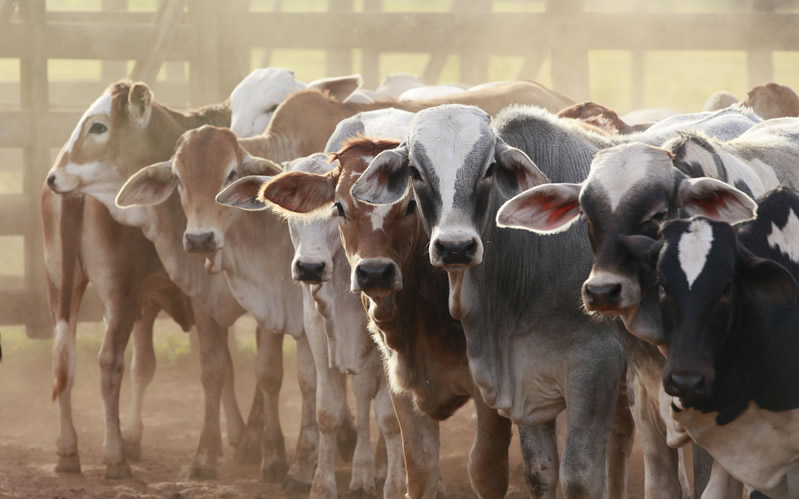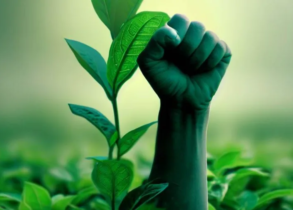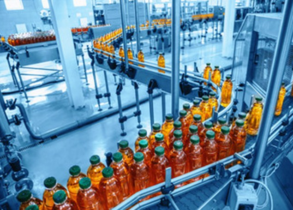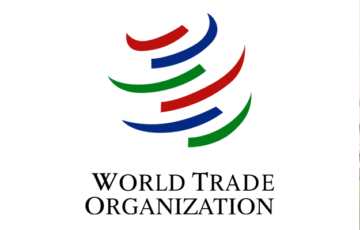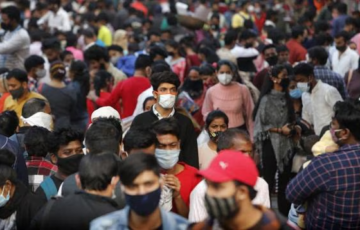ECONOMICS OF ANIMAL REARING
Animal/Livestock Rearing
What is Animal Rearing?
- Animal rearing refers to the practice of raising and managing animals for human consumption, recreational purposes, or financial gain. This involves the selective breeding of animals to enhance desired genetic traits and behaviors that are profitable. In India, animal rearing is a vital component of rural agricultural activities, deeply rooted in the country’s tradition of mixed farming. This symbiotic relationship between crop cultivation and animal husbandry ensures the efficient utilization of resources, where the output of one serves as the input for the other.
Historical Context and Significance in India
- India has a rich history of animal husbandry, boasting a diverse array of animal species including various breeds of cattle, small ruminants, poultry, pigs, and equines. This diversity not only contributes to the agricultural and nutritional needs of the population but also plays a crucial role in the socio-economic fabric of rural communities. Livestock rearing is a major source of income for farmers, supporting the livelihoods of millions of households. The practice of mixed farming, integrating crops and livestock, exemplifies the sustainable use of resources characteristic of rural Indian agriculture.
Objective of Animal Rearing
- The primary goal of animal rearing is to produce valuable livestock and fisheries for human use, which includes but is not limited to economic benefits. This sector has the potential to provide substantial non-farm employment and income opportunities in rural areas, contributing significantly to poverty alleviation and economic development.
Potential of Animal Rearing Economy in India
- Global Standing: India ranks second worldwide in fish production and aquaculture. Its livestock population, according to the 20th livestock census conducted in 2019, is the largest globally, with significant numbers of cattle, goats, sheep, chickens, and ducks.
- Contribution to GDP: The sector’s contribution to the national GDP was nearly 1% in the fiscal year 2017-18, highlighting its economic importance.
- Poultry Market: With a market value of INR 1 lakh crore, India’s poultry industry is the second-largest in the world.
- Employment and Income: Livestock rearing is a primary source of income for approximately 20.5 million people. It accounts for a significant portion of the revenue for small farm households and employs a notable percentage of India’s population.
- Growth Rate: The livestock sector has experienced a steady growth rate, contributing increasingly to the agricultural Gross Value Added (GVA), which underscores its expanding role in the country’s economy.
20th Livestock Census
- The Department of Animal Husbandry & Dairying, under the Ministry of Fisheries, Animal Husbandry & Dairying, considers the collection of detailed and current livestock data a critical priority due to livestock’s pivotal role in the rural economy. The livestock census, a practice initiated in 1919, periodically captures this essential data across the country.
Conduct and Scale of the 20th Livestock Census
- In October 2018, the 20th iteration of the Livestock Census was executed, surveying more than 27 crore households and non-households. This extensive data collection spanned approximately 6.6 lakh villages and 89 thousand urban wards nationwide, illustrating the vast scale and thoroughness of the effort.
Key Findings of the 20th Livestock Census
- Total Livestock Population: There was a recorded total of 535.78 million livestock across the country, marking a 4.6% increase from the 2012 census.
- Bovine Population: The census noted 302.79 million bovines (including cows, buffaloes, mithun, and yaks), a 1.0% increase from the previous census.
- Cattle and Buffaloes: Detailed figures were provided for cattle (192.49 million) and buffaloes (109.85 million), along with distinctions between exotic/crossbred and Indigenous/Non-descript cattle.
- Milch Animals: The count of milch animals, encompassing cows and buffaloes, rose by 6.0% to 125.34 million.
- Sheep, Goats, and Poultry: Significant increases were also seen in the populations of sheep (14.1%), goats (10.1%), and commercial poultry (4.5%).
Significance of Animal Rearing
- Economic and Social Impact: Livestock serves as both a source of income and social security for farmers, offering quick financial liquidity and contributing significantly to the GDP.
- Nutrition and Employment: Animal husbandry provides essential nutrients through milk and eggs, employs a significant portion of the population, and contributes to women’s empowerment through livestock management roles.
- Exports and Environmental Benefits: India’s position as a major beef exporter, alongside the production of exportable goods like wool and leather, showcases the sector’s economic potential. Furthermore, the use of animal waste for fertilizers and biogas production presents environmental advantages.
Challenges in Livestock Development
- Productivity and Health Concerns: Despite the sector’s importance, challenges such as low productivity, disease outbreaks, and inadequate nutrition for livestock persist.
- Infrastructure and Funding Limitations: The sector suffers from insufficient government funding relative to its GDP contribution, poor veterinary infrastructure, and a lack of quality control and standardization for animal products.
- Technological and Market Access: Limited access to technology, informal market structures, and unorganized slaughterhouse practices hinder the sector’s growth and efficiency.
Measures to Promote Livestock Sector
- Promoting the livestock sector is crucial for enhancing food security, generating employment, and improving rural livelihoods, especially in countries like India. Several measures can be taken to support and develop this sector, ranging from improving resources and marketing strategies to leveraging technology and public-private partnerships.
Resources
- Improved Fodder Seed Production: Focus on breeding high-yield fodder crops to ensure a stable and nutritious feed supply.
- Fodder Banks Creation: Establish fodder banks to provide a reliable feed supply during scarce periods.
- Provision of Drinking Water: Ensure accessible and clean drinking water to maintain livestock health and productivity.
Marketing
- Efficient Trade Policies: Implement policies that streamline the marketing of animal products like eggs, fish, and milk to ensure farmers receive fair prices and reduce middlemen’s influence.
National Programs for Development
- Quality Improvement and Organised Procurement: Launch initiatives like the National Program for Dairy Development to enhance milk quality and expand organized milk procurement channels.
Training and Technology
- Skill Development and Subsidies: Offer training and financial subsidies to farmers venturing into livestock rearing as an additional income source.
- Digital Tools for Livestock Management: Develop applications like e-GOPALA to help farmers manage their livestock efficiently.
Indigenous Breeds Promotion
- Protection and Improvement: Encourage the preservation and improvement of indigenous cattle breeds through initiatives like the Rashtriya Gokul Mission, which is focused on enhancing the genetics of native cattle.
Disease Control
- Veterinary Services Strengthening: Bolster veterinary services and conduct widespread animal vaccinations to prevent diseases like Foot and Mouth Disease (FMD) and Brucellosis.
Research and Development
- Investment in Livestock R&D: Increase focus and funding for research and development in the livestock sector to boost productivity and support small and marginal farmers.
Financial Assistance
- Loans and Subsidies: Provide initial financial aid to farmers in the form of low-interest loans and subsidies to encourage investment in livestock.
Adherence to International Standards
- Sanitary and Phytosanitary Measures: Comply with global health and safety standards to ensure the quality and safety of livestock products.
Dairy Sector Financing
- Infrastructure Development Fund: Create funds like the Dairy Processing and Infrastructure Development Fund to increase milk processing capacity and support dairy cooperatives.
Public-Private Partnerships
- Collaboration for Sustainable Farming: Encourage partnerships between the government and the private sector to promote environmentally sustainable livestock farming practices.
Market Connectivity
- Online Platforms for Livestock Trade: Launch platforms like the E-Pashu Haat Portal to facilitate the trading of livestock and germplasm, connecting breeders with farmers.
Private Investment
- Infrastructure Development: Through initiatives like the Animal Husbandry Infrastructure Development Fund, attract private investment to provide financial assistance to farmers.
Innovation in Livestock Uses
- Waste to Wealth: Projects like Gobar-Dhan aim to convert livestock waste into valuable products like compost, biogas, and bio-CNG, promoting circular economy principles.
Cross-Breeding for Genetic Diversity
- Enhanced Breeds: Encourage the cross-breeding of indigenous with exotic breeds to improve genetic diversity, reduce disease rates, and increase resilience to climate change.
Development of Bull Mother Farms
- Milk Yield Improvement: Utilize advanced reproductive technologies to significantly increase milk production potential, benefiting farmers with high-yield calves.
Village-Level Dairy Development
- Infrastructure and Value Chain Creation: Implement village-level systems for milk procurement and processing to boost the dairy sector’s growth and efficiency.
Fishing Sector Development
- Scheme Convergence and Capacity Building: Integrate programs like MGNREGA with aquaculture initiatives to enhance fish farming, supported by cooperative and panchayat-level projects for knowledge sharing.
Important Initiatives by Government to Promote Livestock Sector
- The Government of India has launched several initiatives to bolster the livestock sector, recognizing its vital role in the nation’s economy, particularly in rural areas where it serves as a backbone for the livelihood of millions. These initiatives are aimed at enhancing productivity, controlling diseases, improving genetics, and providing financial and technological support to farmers.
Rashtriya Gokul Mission (2021-22 to 2025-26)
- Objective: The mission focuses on the genetic upgradation of the bovine population and the development and conservation of indigenous bovine breeds.
- Details: With an allocation of Rs 2400 crore over five years, the mission aims to improve productivity and enhance milk production, making dairying more profitable for farmers.
Nationwide Artificial Insemination Programme
- Objective: This program aims to introduce innovative techniques for impregnation in female breeds, limiting the spread of specific genital infections to improve breed effectiveness.
- Details: It is part of a broader strategy to enhance the genetic quality and health of livestock through controlled breeding practices.
National Animal Disease Control Programme (NADCP)
- Objective: Aimed at controlling Foot & Mouth Disease (FMD) and Brucellosis, the program has an outlay of Rs 13,343 Cr over five years, launched in September 2019.
- Details: The main goal is to control and eventually eradicate FMD and Brucellosis by 2025 through vaccination.
Livestock Health & Disease Control (LH&DC) Scheme
- Objective: This scheme is designed to reduce animal health risks through disease surveillance, strengthening veterinary infrastructure, and preventive immunization.
- Details: It supports the broader objectives of maintaining animal health and ensuring the safety of animal products.
Genomic Selection
- Objective: To use DNA-based selection methods, known as genomic selection, to assess the genetic merit of bulls right at birth.
- Details: This technique significantly reduces the time taken to prove the genetic merit of bulls from 6-7 years in traditional methods to almost immediately.
e-GOPALA App
- Objective: Launched on September 10, 2020, by the Prime Minister, the e-GOPALA app serves as a comprehensive breed improvement marketplace and information portal for farmers.
- Details: It facilitates the management of livestock, including the buying and selling of disease-free germplasm in all forms (semen, embryos, etc.).
Dairy Processing and Infrastructure Development Fund (DIDF)
- Objective: To finance the establishment, modernization, and expansion of dairy processing, chilling, and value-addition infrastructure.
- Details: This fund supports the growth of the dairy sector by enhancing processing capabilities and promoting value-added products.
Supporting Dairy Cooperatives and Farmer Producer Organisations engaged in dairy activities (SDC&FPO)
- Objective: To provide soft loans for working capital to Dairy Cooperatives and Farmer Producer Organisations, ensuring stable market access for dairy farmers.
- Details: It aims at strengthening the financial stability and market presence of dairy cooperatives and farmer organisations.
Interest Subvention On Working Capital Loans For Dairy Sector
- Objective: A component introduced by the Department of Animal Husbandry and Dairying to support dairy cooperatives and farmer producer organisations by subsidizing interest on working capital loans.
- Details: This measure is intended to alleviate the financial burden on dairy farmers and cooperatives, encouraging more investment into the sector.
E-Pashu Haat Portal
- Objective: To facilitate the connection between breeders and farmers online for the availability of high-quality bovine germplasm.
- Details: This portal acts as a digital marketplace for the trading of livestock and germplasm, enhancing the accessibility of quality breeds.
Fisheries and Aquaculture Infrastructure Development Fund (FIDF)
- Objective: FIDF provides concessional financing or loans for the development of specific fisheries infrastructure facilities.
- Details: Targeted at State Governments/UTs and state entities, this fund aims to boost the fisheries sector by improving infrastructure.
Livestock Sector as a Key to Poverty Reduction Strategies
- Significance: Livestock rearing is pivotal for income and risk mitigation among small and marginal farmers, especially in rain-fed regions. It is a major source of food products, employment, household income, and export earnings. Importantly, livestock wealth is distributed more equitably than land-related wealth, offering self-employment opportunities and contributing significantly to the empowerment of women. From an equity and livelihood perspective, it is central to poverty alleviation efforts and is poised to become a key economic driver if the current growth trends continue.
Establishment of the Animal Husbandry Infrastructure Development Fund (AHIDF)
- Introduction of AHIDF: The Cabinet Committee on Economic Affairs, led by the Prime Minister, approved the creation of the Animal Husbandry Infrastructure Development Fund (AHIDF) with a corpus of Rs. 15,000 crores. This strategic move was part of the broader Atmanirbhar Bharat Abhiyan stimulus package, focusing on self-reliance and economic recovery.
- Fund Utilization: AHIDF is designed to stimulate investments from various entities including Section 8 companies, private enterprises, Micro Small and Medium Enterprises (MSMEs), Farmers Producers Organisations (FPOs), and individual entrepreneurs. The investments are directed towards setting up:
- Dairy processing and value addition infrastructure.
- Meat processing and value addition infrastructure.
- Animal feed plants.
Key Beneficiaries and Benefits
- Eligible Beneficiaries: The scheme targets a wide array of stakeholders within the sector, namely Farmer Producer Organisations (FPOs), private companies, individual entrepreneurs, Section 8 companies, and MSMEs.
- Financial Benefits:
- Beneficiaries are required to contribute a minimum of 10% of their margin money, with scheduled banks providing loans for the remaining 90%.
- A 3% interest subvention is provided to the eligible beneficiaries to reduce the financial burden.
- The scheme includes a 2-year moratorium period on the principal loan amount, followed by a 6-year repayment period.
- For approved projects within MSME-specified ceilings, credit guarantees will be offered through the Credit Guarantee Fund, covering up to 25% of the borrower’s credit facility.
Objectives of AHIDF
- Enhancing Processing Capacity and Market Access: To increase the processing capacity and product diversification for milk and meat, thereby granting unorganized rural producers better access to the organized market.
- Improving Producer’s Price Realisation: Aims at enabling producers to fetch better prices for their products.
- Ensuring Quality for Consumers: Facilitates access to high-quality milk and meat products for domestic consumers.
- Nutritional Security and Malnutrition Mitigation: Addresses the protein needs of the growing population and tackles malnutrition, especially among children.
- Encouraging Entrepreneurship and Employment: The initiative seeks to foster entrepreneurship and create employment opportunities in the sector.
- Promoting Exports: Aims to increase the export contribution of milk and meat products, boosting the sector’s global presence.
- Quality Feed Availability: Ensures the availability of quality concentrated animal feed at reasonable costs, contributing to the balanced diet of livestock.
Fisheries Sector: Blue Revolution
- The Blue Revolution, akin to the Green Revolution that revolutionized agriculture, has been pivotal in transforming the fisheries sector in India and around the world. It encompasses a comprehensive approach towards the development of the fisheries sector to enhance fish production and productivity, ensuring economic growth, nutritional security, and sustainable practices.
Initiation of the Blue Revolution
- The Blue Revolution in India, also known as the Neel Kranti Mission, was initiated in 1985 and spanned until 1990, aligning with the 7th Five-Year Plan. The Fish Farmers Development Agency (FFDA) was supported by the government to promote the development of fisheries. The initiative aimed to augment fisheries in a sustainable manner, addressing biosecurity and environmental concerns to benefit the economy, fishermen, and fish farmers, while also ensuring food and nutritional security.
Potential of the Fisheries Sector
- India stands as the world’s second-largest fish producer, with the fishing industry employing approximately 28 million people. Contributing 7.7% to global fish production, India is the fourth-largest fish exporter globally. Over the last five years, the fishery sector has seen a growth rate of 6% to 10%, becoming India’s top agricultural export. Fish exports from India constituted more than 20% of all agricultural exports and around 10% of total exports in 2017-18. The sector plays a crucial role in ensuring nutritional and food security, particularly in coastal areas.
Objectives of the Blue Revolution
- The Blue Revolution aims to responsibly and sustainably boost global fish production, modernize the fishing industry with innovative technology, ensure nutritional and food security, create employment, and generate income through exports. It also seeks to promote inclusive growth by supporting aquaculture and fishing farmers.
Challenges Faced by the Fisheries Sector
- The sector faces several challenges, including underutilized potential of brackish water resources, lack of high-quality fish seeds, substandard fishing equipment, lack of branding and standardization, inadequate trained manpower, outdated technologies in inland fisheries, unsustainable fishing methods, and poor export performance due to a weak value chain.
Measures to Boost the Blue Revolution
- Efforts to revitalize the Blue Revolution include creating Fisheries Producer Organizations (FPOs), constructing post-harvest infrastructure, restoring natural productivity, promoting integrated farming systems, and upgrading fishing vessels with advanced technology. Important committees like the Ashok Dalwai Committee and Meena Kumari Committee have been set up to develop plans for income growth and assess deep-sea fishing policies, respectively.
Policy Interventions
- Policy interventions such as the Pradhan Mantri Matsya Sampada Yojana (PMMSY), National Policy on Marine Fisheries (2020), Blue Revolution 2.0, establishment of the National Fisheries Development Board (NFDB), and the Fisheries and Aquaculture Infrastructure Development Fund (FIDF) have been initiated. These policies aim at integrated development and efficient management of the fisheries sector to enhance productivity, sustainability, and economic viability.
Dairy Sector: White Revolution (Operation Flood)
- The White Revolution, also known as Operation Flood, launched on January 13, 1970, marks a significant turning point in India’s dairy sector. Initiated by India’s National Dairy Development Board (NDDB), this ambitious program transformed India from a milk-deficient nation to the world’s leading milk producer, surpassing the United States in 1998. It was designed to empower farmers by giving them control over the dairy resources they produce, fostering development through mass production and mass participation.
Potential of the Dairy Sector in India
- India boasts the largest cattle population globally, making dairy products the most significant agricultural product in the country. Dairy farming directly supports 80 million farmers and contributes 5% to the national economy. Notably, the NSSO’s 70th round survey highlighted that 23% of agricultural households with very small landholdings rely on livestock as their primary income source. Animal husbandry’s growth is seen as more inclusive, benefiting predominantly small and marginal farmers in dryland areas.
Objectives of the White Revolution
- Enhance cooperative societies to improve the transportation, storage, and procurement of milk.
- Increase the production and commercialization of a variety of milk products.
- Establish facilities for artificial insemination, veterinary care, and the promotion of superior cattle breeds.
- Create a National Milk Grid to connect producers with consumers across over 700 cities and villages.
Achievements of Operation Flood
- India’s emergence as a major milk producer.
- The creation of alternative employment opportunities in rural areas.
- Promotion of indigenous and high-quality livestock.
- Benefits for small and marginal farmers, including landless laborers.
- Faster growth and a larger share of the organized dairy market, accounting for 26–30% of the business.
Challenges in the Dairy Sector
- Inadequate market infrastructure and dominance of the informal sector.
- Unhygienic conditions for cattle.
- Prevalence of diseases like foot-and-mouth.
- Impact of climate change on productivity.
- Poor livestock insurance coverage and inadequate cold chain facilities.
- Competition from plant-based substitutes and dairy analogues.
- Lack of conservation strategies for indigenous breeds and support infrastructure.
New Directions: Towards a Second White Revolution
- Geo-tagging of animals for health monitoring.
- Strengthening value chains and Dairy Development Extension Programs.
- Utilizing Artificial Intelligence and Machine Learning to enhance animal productivity.
- Exploring export potential for value-added milk products to neighboring countries.
Policy Interventions
- The National Livestock Mission to support the growth of livestock.
- The Gobar-Dhan scheme for converting farm waste into energy resources.
- The Rashtriya Gokul Mission for the conservation and development of indigenous breeds.
- Dairy Entrepreneurship Development Scheme under NABARD for promoting self-employment in the dairy sector.
Budget Initiatives
- Recent budget initiatives aim to provide a level playing field for cooperative societies and enhance funding for dairy development programs.
Role of Cooperatives
- Cooperatives played a crucial role in the success of Operation Flood, enabling small dairy farmers to bypass intermediaries, secure minimum procurement prices, and improve their knowledge and bargaining capacity.
National Milk Day
- Celebrated annually on November 26, National Milk Day honors the birth anniversary of Dr. Verghese Kurien, a key figure in the White Revolution.
Women in Dairy Farming
- Women have played a significant role in the dairy sector, with increased participation in dairy cooperative societies and enhanced income levels, contributing to improved family welfare.
Conclusion
- The integration of rural farming with technological advancements under the “Jai Kisan, Jai Vigyan” ethos holds the promise of transforming India’s dairy sector. Enhancing farmers’ return on investment remains a critical objective, ensuring the continued success and sustainability of the dairy industry in India.
UPSC PREVIOUS YEAR QUESTIONS
1. Explain various types of revolutions, took place in Agriculture after Independence in India. How these revolutions have helped in poverty alleviation and food security in India? (2017)
2. Livestock rearing has a big potential for providing non-farm employment and income in rural areas. Discuss suggesting suitable measures to promote this sector in India. (2015)

